The Crooked Forest, Poland
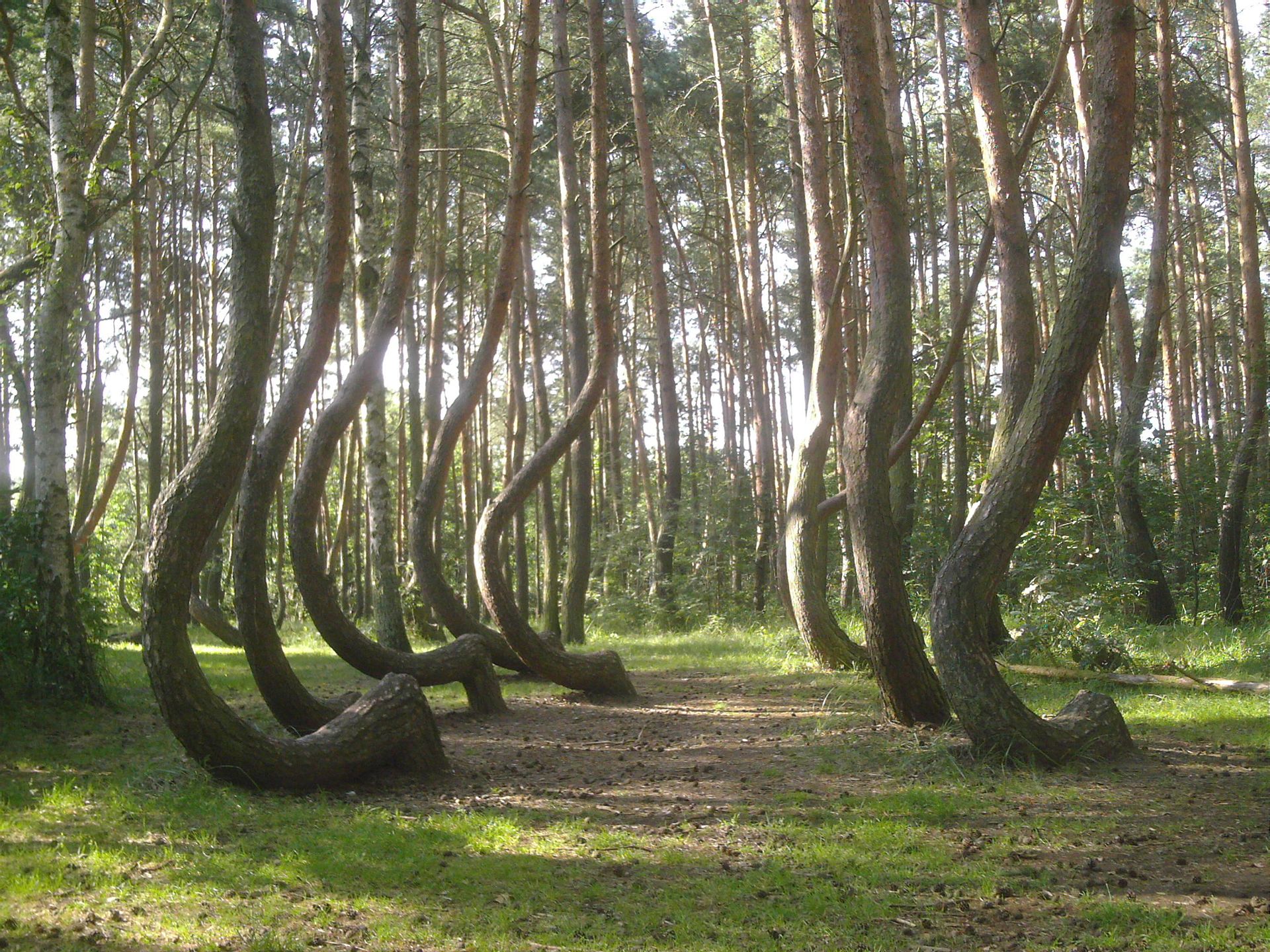
In the midst of Nowe Czarnowo village in Poland lies this bizarrely misshapen grove of pine trees. Every tree trunk is twisted in a big loop, pointing northwards, and locals and arboriculturists alike are stumped to explain how this strange formation came to be. Most experts agree that the now-famous ‘Crooked Forest’ is the result of human interference, but the question of whether it was a deliberate, abandoned project to grow specifically-shaped timber, or the work of a tree-loving eccentric, remains a mystery.
Easter Island
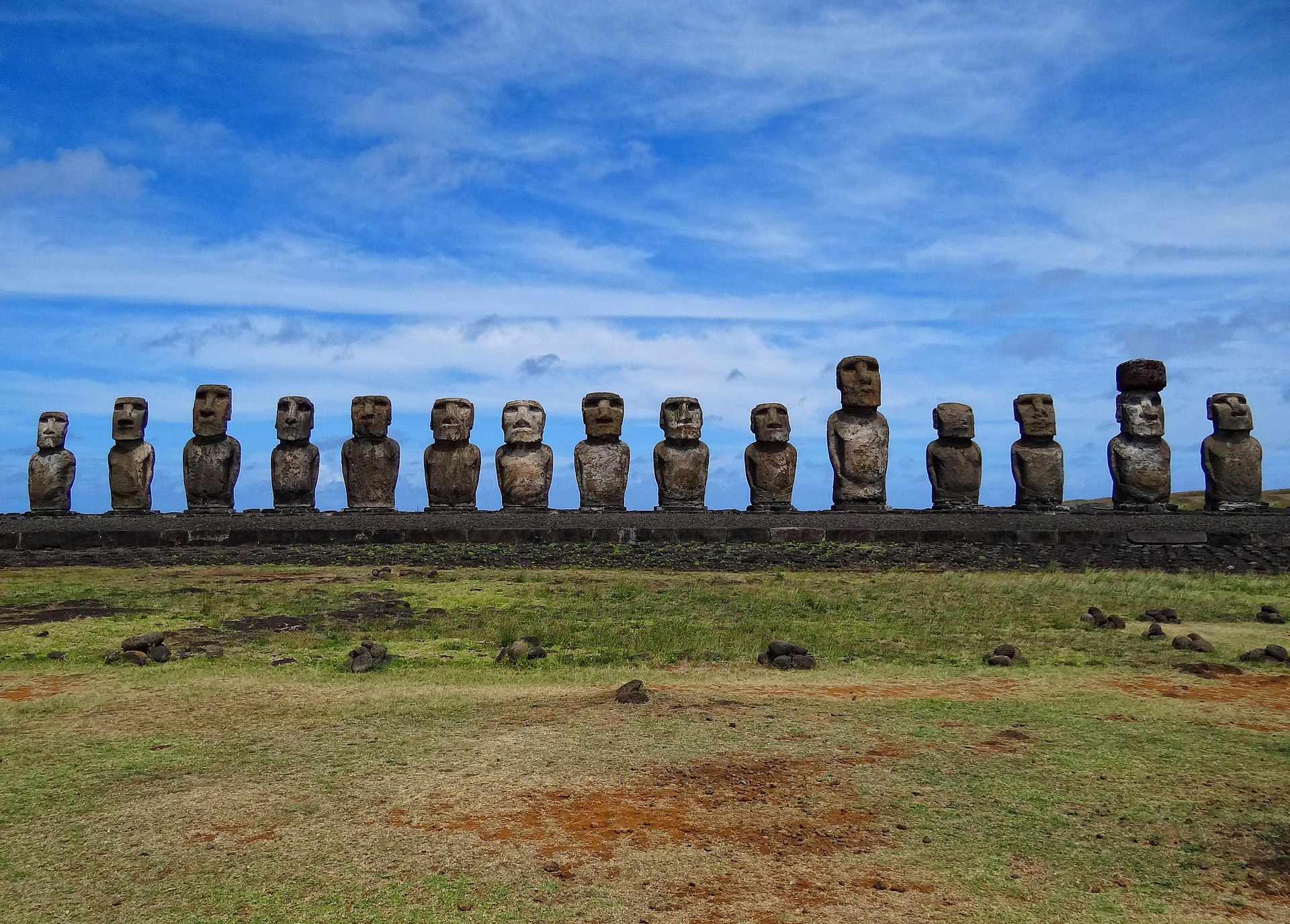
It is one of the most remote inhabited places on the planet, yet it is famous worldwide for its baffling stone faces. Easter Island, deep in the south-eastern Pacific Ocean, is home to nearly 1,000 giant stone statues with disproportionately large heads. These monuments are called ‘moai’ and were carved by the Rapa Nui people around the medieval era. Questions remain over how craftspeople distributed them across the island, why so many were made, and what they signified in this long-lost culture.
Hierapolis’ Gates of Hell

In ancient times, the so-called Gates of Pluto in Hierapolis (now in modern-day Turkey) attracted believers and sceptics alike. Witnesses were amazed to see that animals that passed through this gate and into the cave beyond would faint and even die on the spot. Priests, however, appeared to be immune to the invisible force. The spot is now a tourist attraction, and scientists have since proven that a subterranean fissure releases highly-concentrated carbon dioxide gas into the caves, easily strong enough to kill animals and make people pass out.
Blood Falls, Antarctica
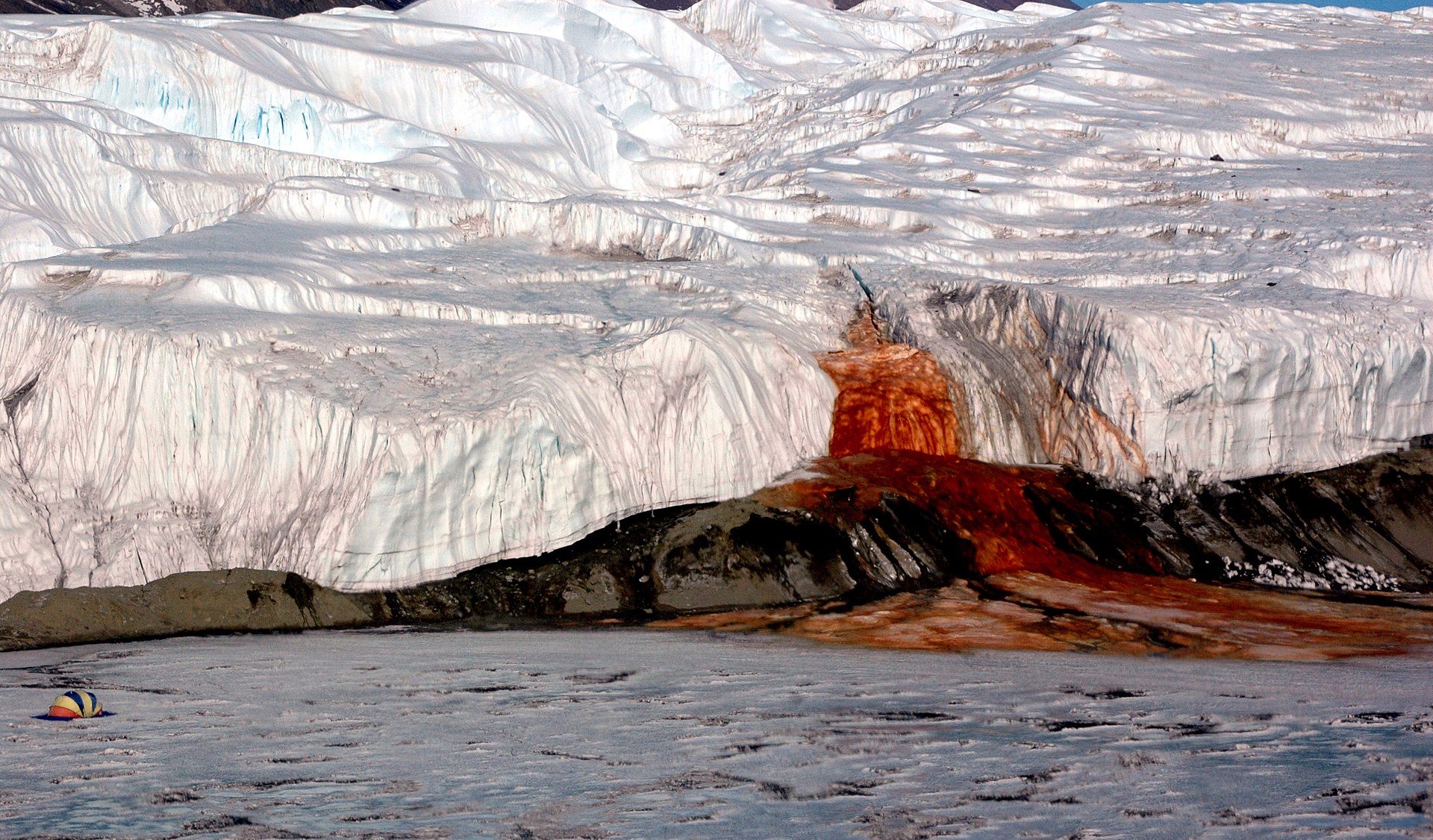
Amid the bleak white landscape of Antarctica’s Taylor Glacier is a violent red waterfall, which has puzzled experts ever since it was discovered by the Australian explorer Thomas Griffith Taylor in 1911. At first, scientists assumed that red algae living within the glacier must be the source of this unusual colour. However, more recent experiments have revealed that the waterfall – fed by a saltwater lake 400 meters below the ice surface – is tinged red by iron oxides. However, scientists also found bacteria living in the water, a discovery that affects our understanding of how organisms survive in extreme environments.
Magnetic hill, various locations
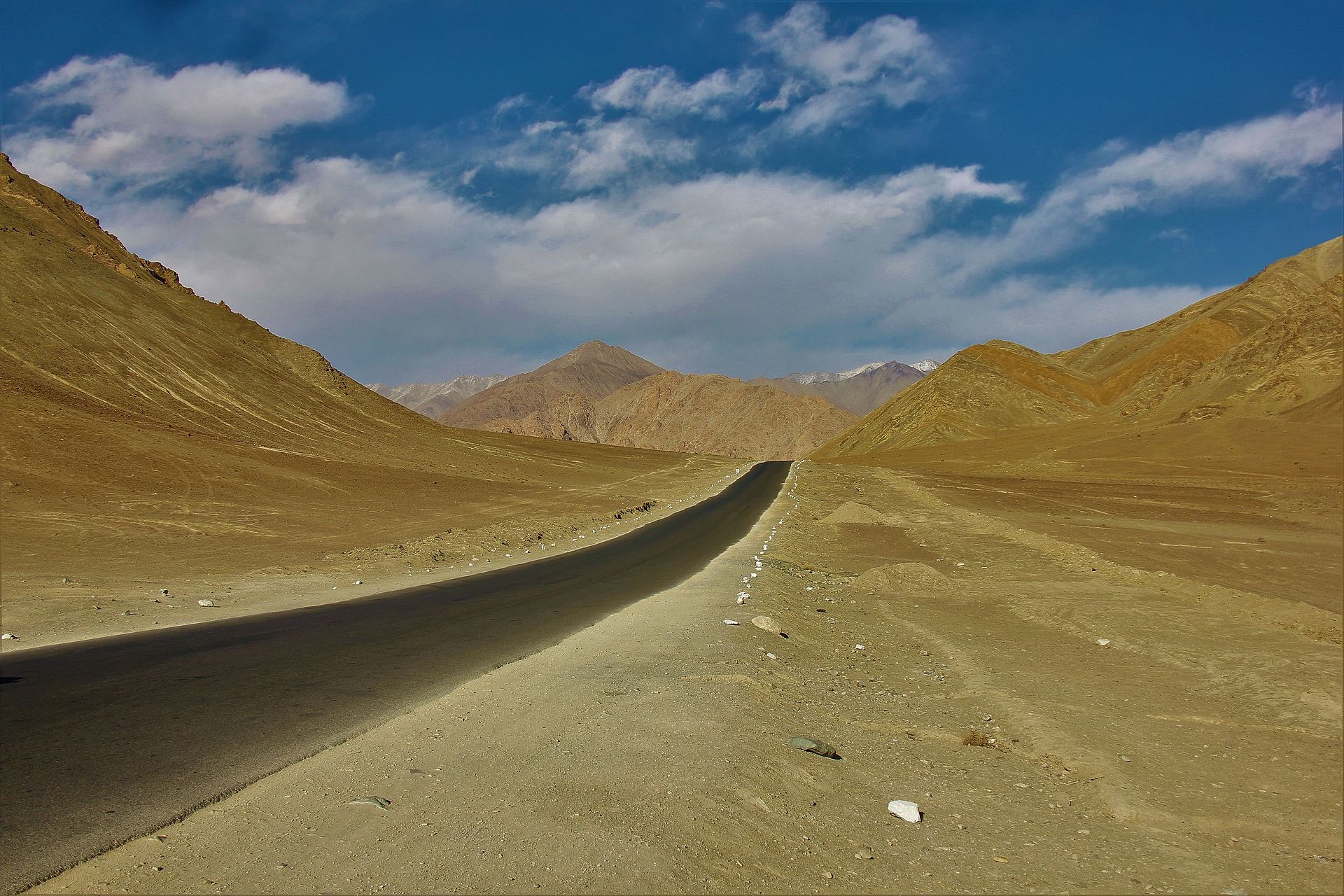
Magnetic hills, also known as gravity hills, are among the most visually confusing geographical features you can explore. Found across the world, they are locations where the angles of the surrounding land, in contrast with your position, create an optical illusion that makes downhill slopes appear as if they are uphill. One such magnetic hill lies near Leh in Ladakh, India. Objects and vehicles along this long road appear to roll uphill when they are in fact being dragged down by gravity.
Richat Structure
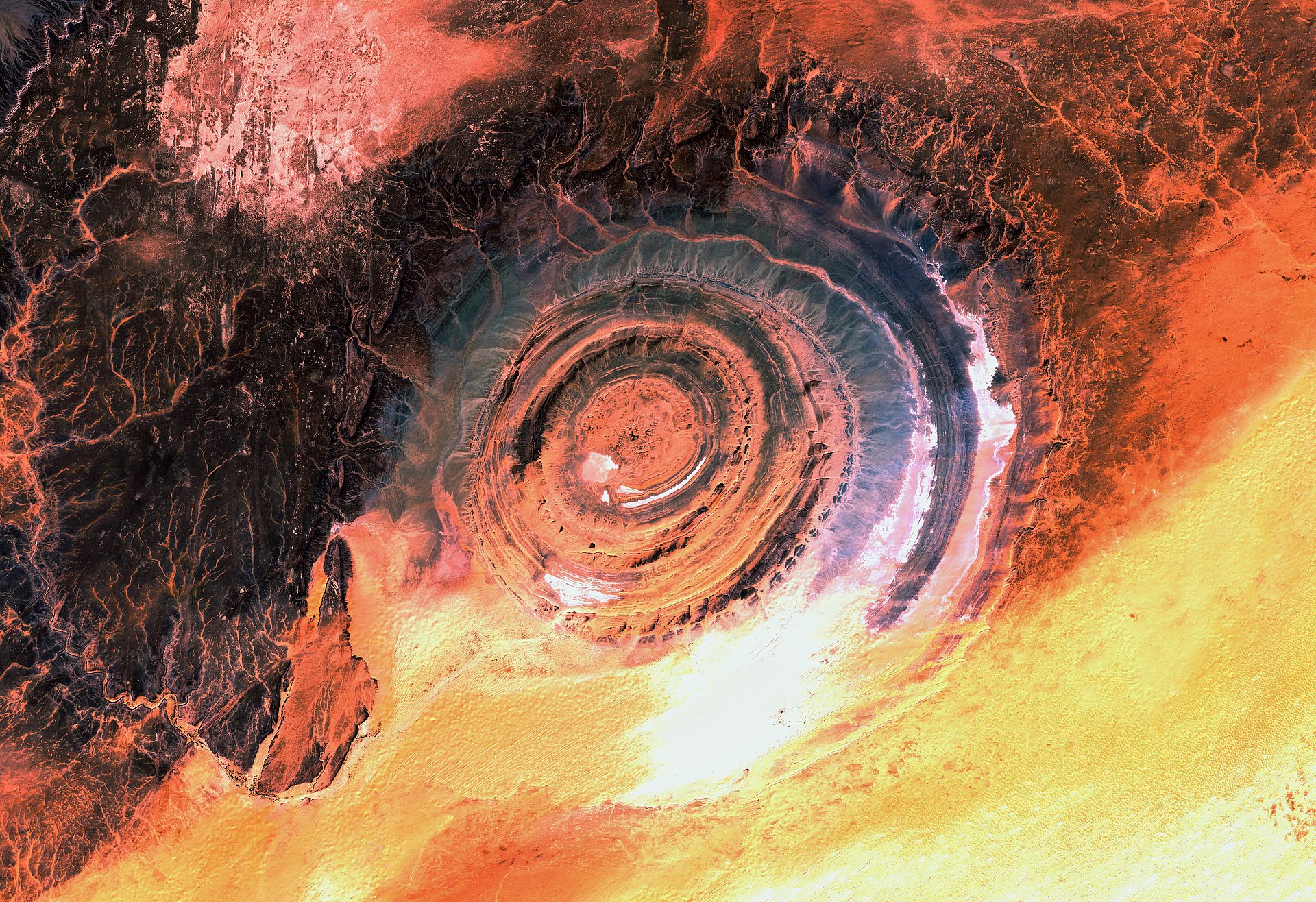
The Richat Structure of the Sahara Desert, located in Mauritania, is a long-eroded dome filled with a dazzling array of concentric rings in a multitude of rock types. Since it was formally identified in 1952, experts have debated whether it could be the site of a sizeable meteor impact, although this theory has since been discredited. There is evidence to suggest some of the rocks may have formed 105 million years ago. In 2011, a team concluded that the site’s bizarre structure was the result of low-temperature hydrothermal waters, but they argued further investigation is needed.
Georgia Guidestones
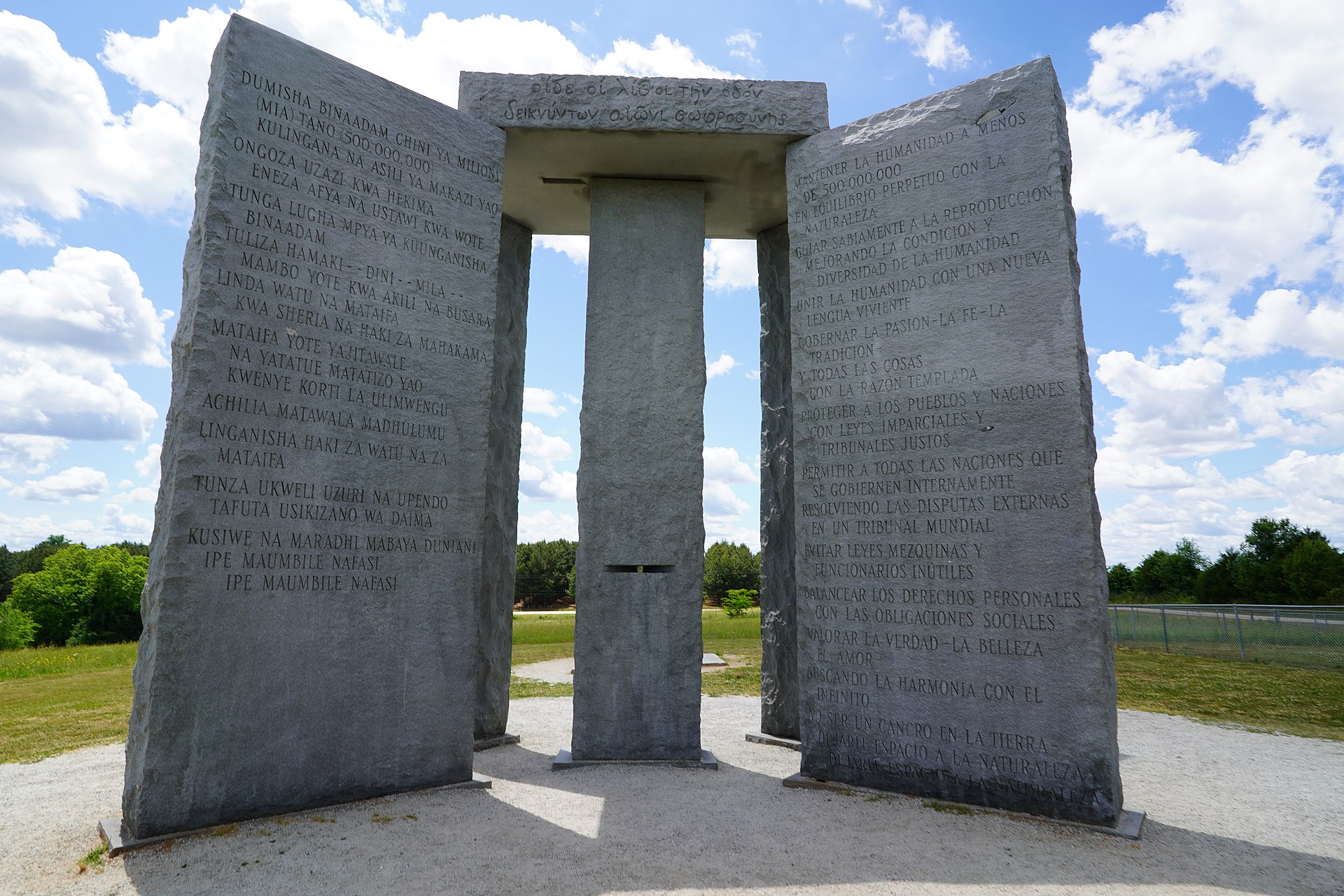
In June 1979, an anonymous man commissioned a great granite monument and placed it on a five-acre plot of recently-purchased land in Elbert County, Georgia. Though he claimed to be representing “a small group of loyal Americans”, he never explained his actions and vanished after it was erected. The stones were engraved with ten guidelines, translated into eight languages, cautioning onlookers to “avoid useless officials” and “maintain humanity under 500,000,000 in perpetual balance with nature.” It’s said that the words are an apocalyptic warning to future generations. The site, previously defaced by people who claimed the Guidestones were Satanic, was destroyed by a bomb in 2022.
Nazca Lines
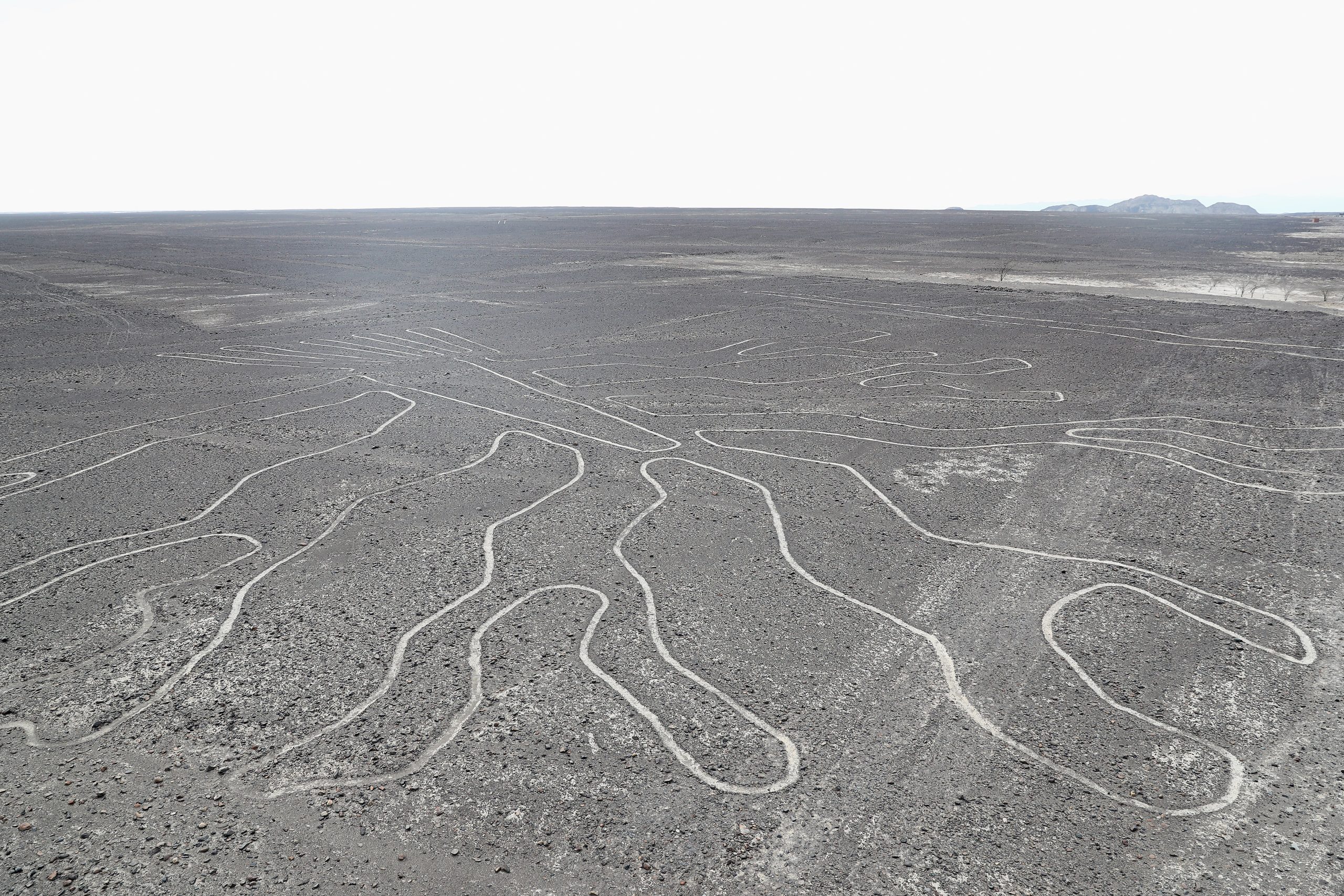
The bold marks of the Nazca Lines adorn the Nazca Desert soils in Peru. Dating from 500 BC to 500 AD, they depict various animals and plants, and they span over 1,300 kilometres in total. They continue to puzzle experts, who have suggested they may be religious in nature, help to map the stars above, connect different fields and irrigation systems or form the basis of giant weaving looms. The Nazca Lines have also attracted fringe science fans who claim the site must be the creation of extra-terrestrial visitors.
Hanging Gardens of Babylon

The Hanging Gardens of Babylon are listed among the Seven Wonders of the Ancient World. They were reportedly a majestic display of hydroculture and engineering, forming a small man-made mountain of lush vegetation. Ancient Babylonian people made no record of the site, but later writers described the Gardens in vivid detail. There are various theories about what became of the Hanging Gardens, no trace of which has ever been found. Some claim it was just a myth; some say it lies in ruins beneath the Euphrates River in modern-day Iraq; and others have suggested it is one and the same as the Assyrian King Sennacherib’s garden, which was planted in Nineveh on the River Tigris.
Great Pyramid of Giza
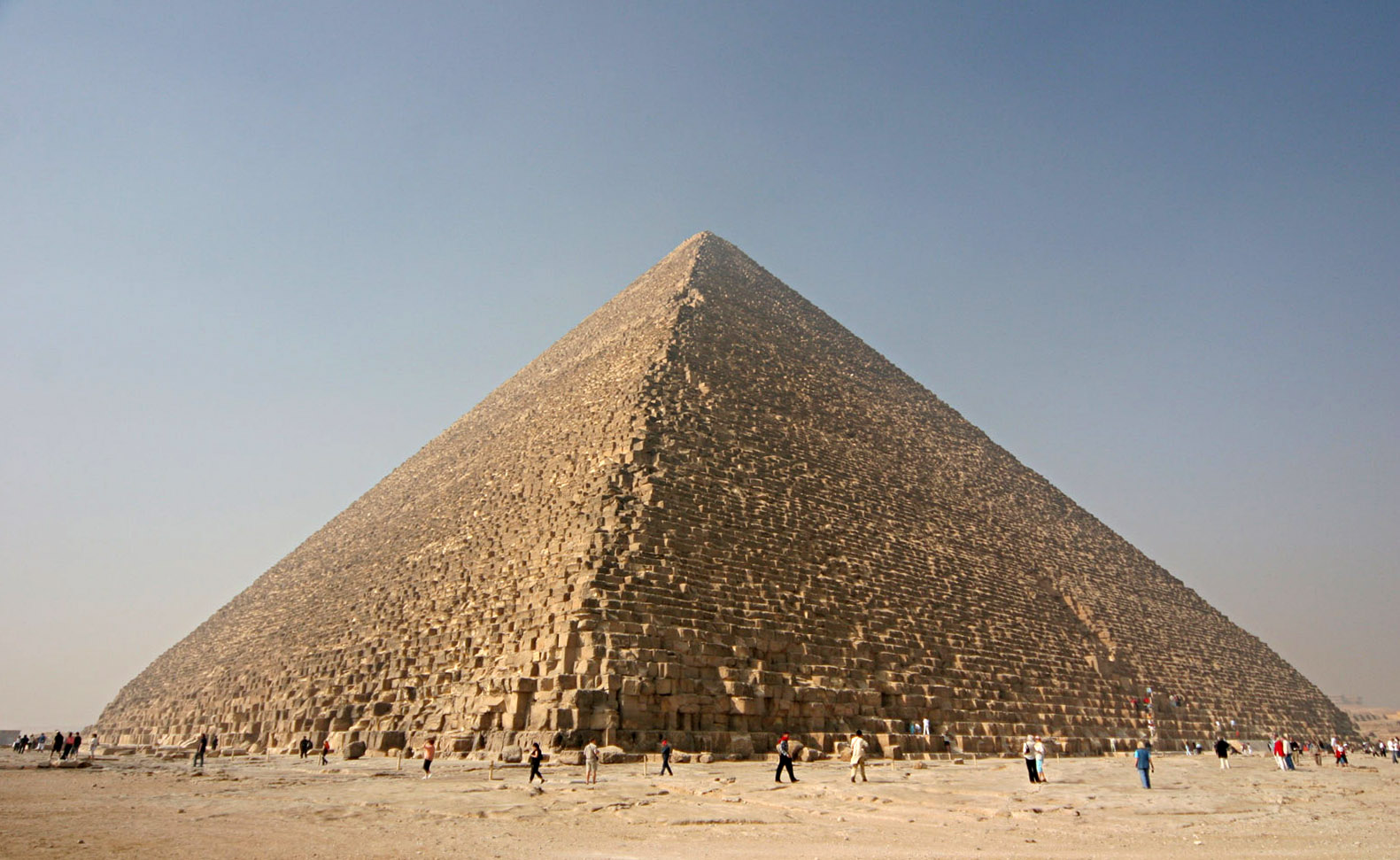
The astonishing Great Pyramid of Giza remained the largest man-made structure on the planet for over 3,800 years. Though it’s now dwarfed by Taipei 101 and the Burj Khalifa, for all their ingenuity, modern architects still haven’t figured out exactly how the Ancient Egyptian people built this colossal tomb. Once covered with gleaming white limestone, this pyramid was initially believed to be the result of slave labour – but later discoveries revealed that it may have instead been the work of conscripted labourers. The organisation required to mine, cut, move and assemble these massive stones remains largely a mystery.